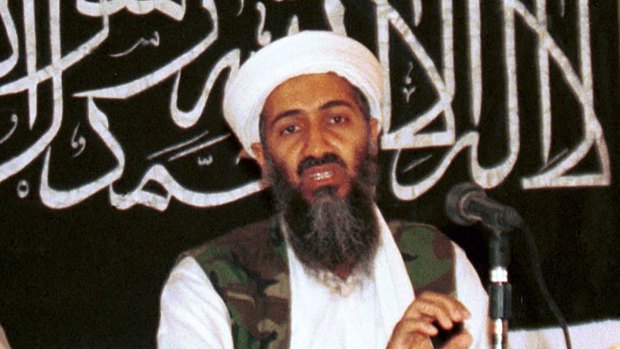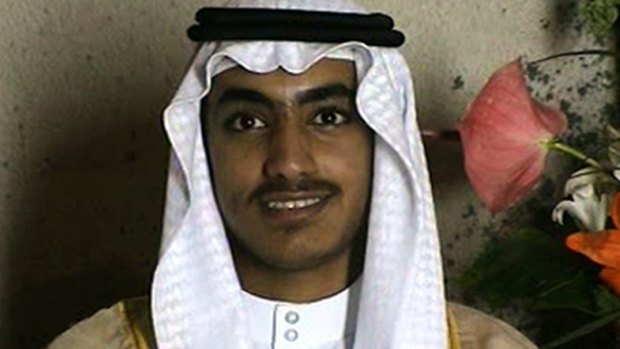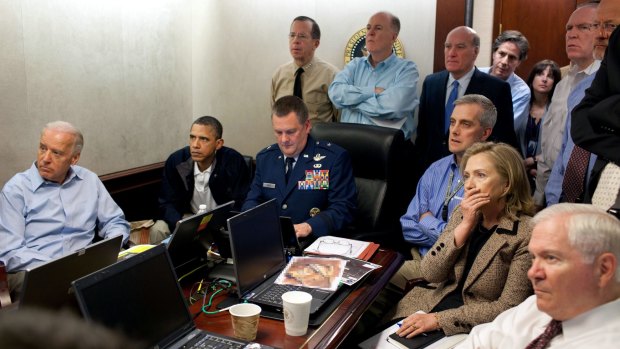This was published 6 years ago
Secret Osama Bin Laden files reveal Iran dealings and a curious taste in movies
By Cleve R. Wootson Jr
Beirut: It's impossible to know whether Osama bin Laden, sequestered in his Abbottabad hideout in Pakistan, ever turned on the DVD player and popped in a documentary he could instantly fact-check: Where in the World Is Osama bin Laden?
Bin Laden's video-viewing habits were highlighted by the CIA on Wednesday when it released a trove of documents six years after the raid that killed the mastermind of the September 11, 2001, attacks. But for every insight from the release, there are dozens of head-scratchers, starting with bin Laden's movie collection.

Osama bin Laden fronts a news conference in Khost, Afghanistan, in 1998. Credit: AP
The man once listed as No. 1 on the FBI's most-wanted list had collected the kid movies Antz, Chicken Little and Cars. In addition to the more serious documentary on the international terrorist, there were BBC and National Geographic documentaries, including World's Worst Venom, Inside the Green Berets and Kung Fu Killers, plus two other documentaries on himself.
Nearly half a million files, 321 gigabytes in total, were found on the computer seized in the US raid of May 2, 2011, from bin Laden's compound.

Hamza bin Laden is seen as an adult in a video of his wedding. The video of Osama bin Laden's son and potential successor was released by the CIA on Wednesday.Credit: AP
The files also revealed "secret dealings" between Iran and al-Qaeda. A never-before-seen 19-page document purportedly written by a senior member of al-Qaeda details an arrangement between Iran and members of the group to strike American interests in "Saudi Arabia and the Gulf".
Iranian intelligence facilitated the travel of some operatives with visas, while sheltering others. The author of the file, described as "well-connected," explains that al-Qaeda's forces violated the terms of the agreement of the deal, however, resulting in several men being detained.
Mike Pompeo, CIA director, said al-Qaeda and Iran have always built "secret and open" ties. He attributed the cooperation between the two parties to the fact that they view the West as a common enemy, referring to an "ideological consensus" of their cooperation against the West.
He added that the two sides did not fight against each other because they considered the West a greater threat.

Barack Obama and his national security team, including Joe Biden and Hillary Clinton, in the Situation Room on May 1, 2011, as the raid on the bin Laden compound took place.Credit: Handout/EPA
According to the CIA, there were also documents, videos and audio recordings that give insight into al-Qaeda's internal fissures and disputes between the terrorist network and its allies.
Although the exact purpose of the files died with bin Laden, they track with the common themes that emerged from the terrorist leader's time in hiding.
Bin Laden had been a major player on the international stage. After the attacks, he was confined mostly to a section of a 3500-square-metres compound with no internet or phone connection, out of public sight.
He was a man who got bored, experts say, and occupied himself with movies, books by Noam Chomsky and Bob Woodward, documentaries and porn.
"When you study terrorist groups, that's always what's striking to people, the kind of quirky, human side of them," Dan Byman, professor at Georgetown University and a senior fellow at the Brookings Institution, said. "Their whole life is not spent plotting around the campfire saying, 'How do we infiltrate America's defence?'"
"They'll have lots of pornography, like men all over the world. A lot of the documents are complaining about bureaucracies. What's wrong with the fax machine. They're involved in the same sort of organisational problems of bureaucracies that we all have. In some cases, a lot worse."
But bin Laden did appear to be doing his part to advance al-Qaeda's aims. In the CIA's release, there are draft propaganda videos and statements by him, Islamist militant propaganda, and a personal journal in which he'd written on the day he died.
To anti-American terrorist groups, bin Laden was a sort of well-respected emeritus professor, Byman said. He was no longer actively involved in plots but was still trying to lend his intelligence and influence to the organisation he had helped form and then expanded - while trying to prevent their implosion.
And the ideological and practical divisions were metastasising. As previously reported, the documents included "chilling admonitions to remain focused on killing Americans" and concerns that important goals were distracted by regional fights.
"Our strength is limited," bin Laden wrote in a 2010 letter that compared the United States to a tree with branches that project across the world. "So our best way to cut the tree is to concentrate on sawing the trunk."
"This is a movement that historically has been highly divided," Byman said. "One thing Osama has been doing is trying to be a unifier. He was very comfortable working with people who agreed with him on one issue and disagreed with him on five. Toward the end of his life, a lot of what he was trying to do was to get groups to work together."
In the log of bin Laden's video collection, there were also scenes from the wedding of his son Hamza, the first picture of the heir apparent as an adult.
According to Thomas Joscelyn and Bill Roggio, scholars at the Washington-based Foundation for the Defence of Democracies who were allowed to study the trove before it was made public, it provides new insights.
"The Abbottabad repository confirms that bin Laden was anything but retired when US forces knocked down his door.
"He was not a mere figurehead," they write in the Long War Journal.
Washington Post; Telegraph, London